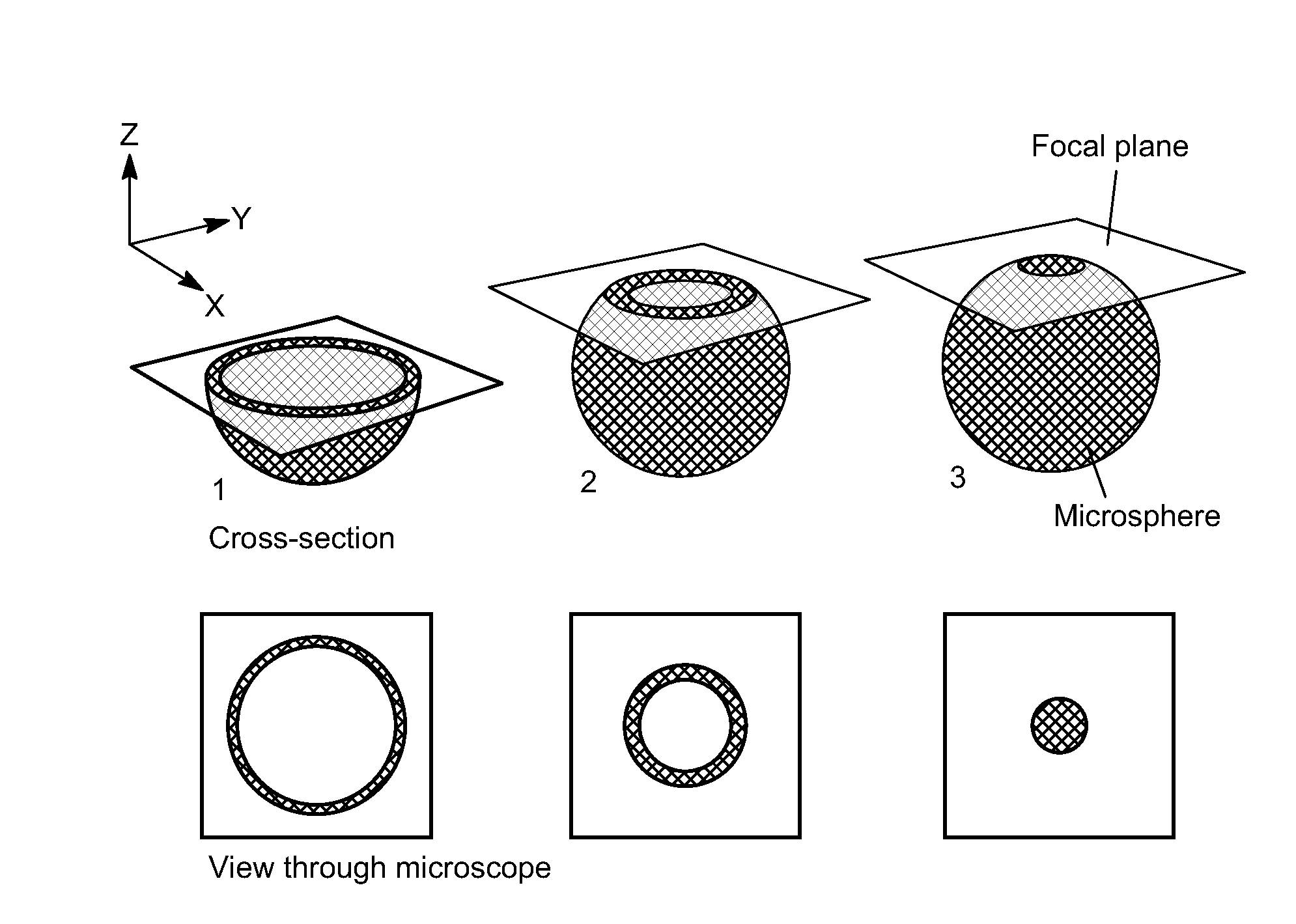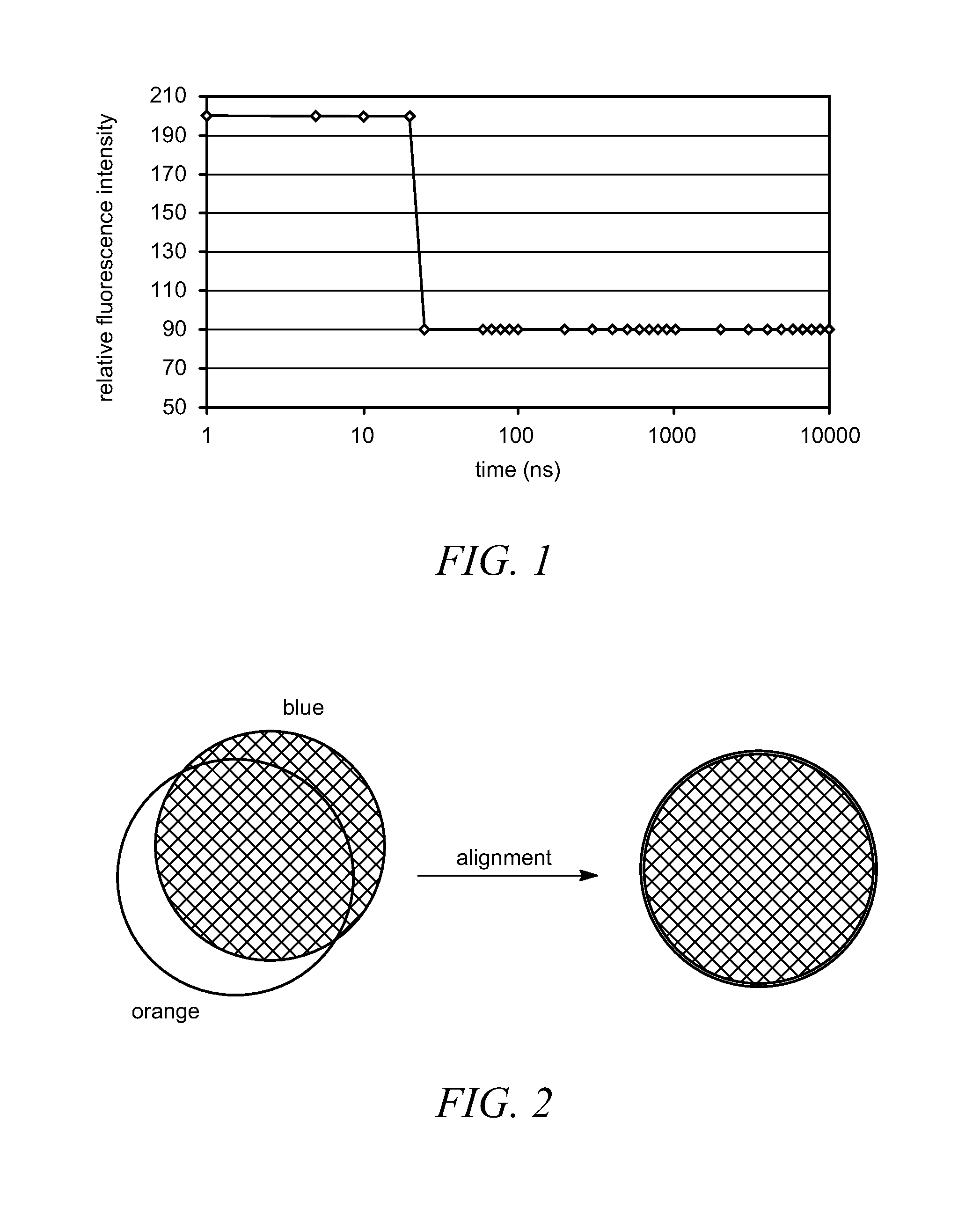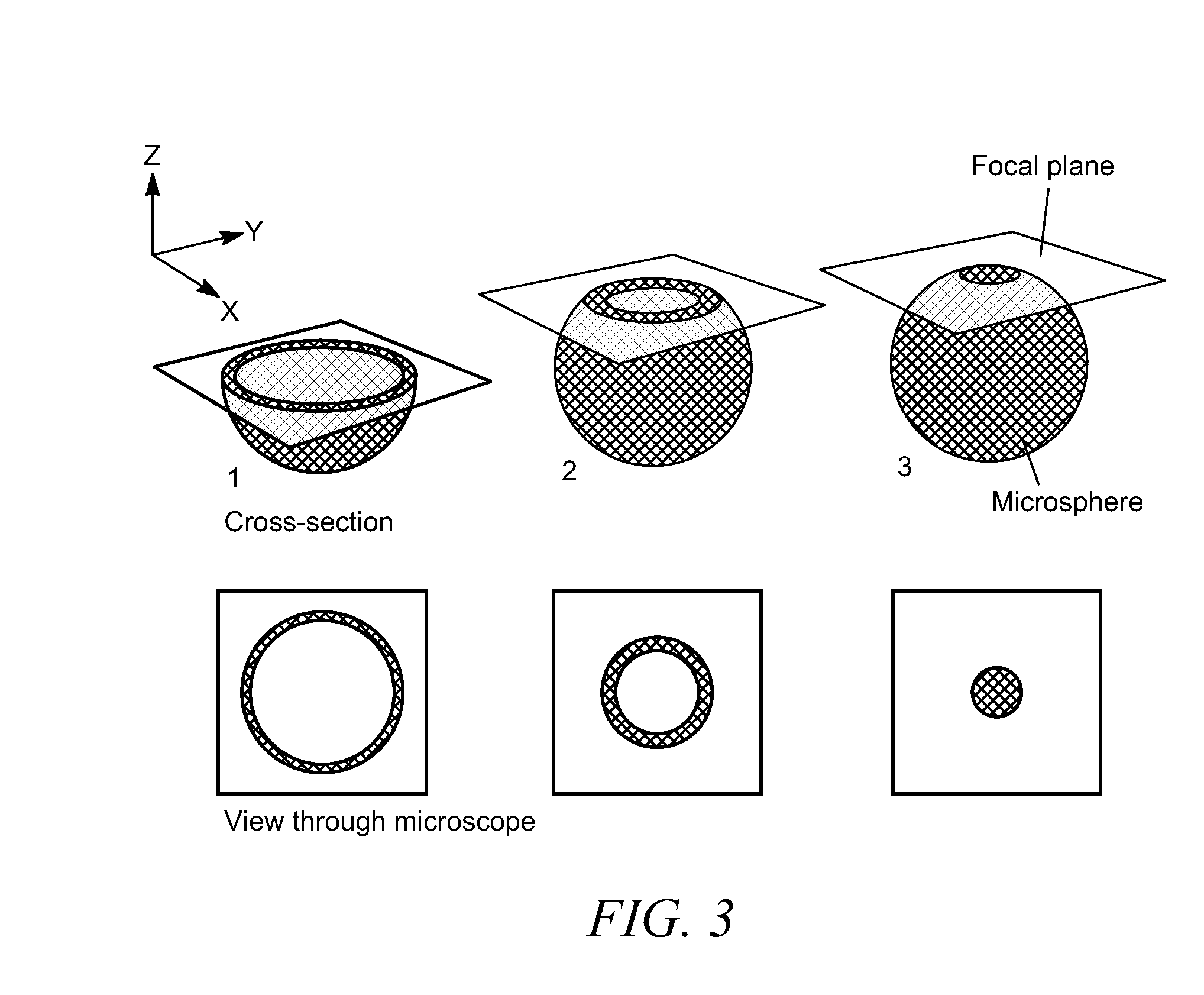Microplates containing microsphere fluorescence standards, microsphere standards, and methods for their use
a microsphere fluorescence and microsphere technology, applied in the field of microsphere fluorescence standards for microspheres, can solve the problems of ineffective cell-free systems, inconvenient cellular assays, and prohibitively expensive and time-consuming serial assays of each material,
- Summary
- Abstract
- Description
- Claims
- Application Information
AI Technical Summary
Benefits of technology
Problems solved by technology
Method used
Image
Examples
example 1
Preparation of Microspheres
[0060]Microspheres having concentric fluorescent spherical zones can be prepared using the methods described in U.S. Pat. No. 5,786,219 (issued Jul. 28, 1998). The microspheres have at least two distinct concentric zones, labeled with one or more fluorescent dyes.
[0061]FocalCheck microspheres of various micrometer diameters (e.g., 1, 6, and 15 micrometers) are commercially available from Molecular Probes, Inc. (Eugene, Oreg.).
example 2
Preparation of Time-Resolved Microspheres
[0062]Microspheres having a uniform orange stain (with short fluorescence life time, about 18 ns) and a deep red ring stain (with long fluorescence life time, about 300 μs) were prepared according to the following method.
[0063]The following stock solutions were prepared: 4,4-difluoro-1,3-diphenyl-5,7-dipropyl-4-bora-3a,4a-diaza-s-indacene (5.0 mg; Molecular Probes Inc.; Eugene, Oreg.) was dissolved in methylene chloride to give a stock solution having a concentration of 2.0 mg / mL (Stock solution A). Pt (II) Meso-tetra (pentafluorophenyl) porphine (4.0 mg, Frontier Scientific, Inc., Logan, Utah) was dissolved in methylene chloride to give a stock solution having a concentration of 4.0 mg / mL (Stock solution B).
[0064]A 1.0 mL suspension (10% solids) of 15.0 μm microspheres (polystyrene / 2% divinylbenzene; Bangs Laboratories) was placed in a test tube. Approximately 3 mL of ethanol was added to the test tube, and the microspheres were resuspended....
example 3
Determining Acceptability of Microspheres Coated onto Microplates
[0068]Microplates coated with microspheres were examined using a Zeiss Axioplan fluorescence microscope to assay the coating acceptability. Microscope objectives and stages were thoroughly cleaned to prevent the transfer of any oil or dirt to the microplates. The plates were handled with cotton-gloved hands, touching only the edges of the plate. The plates were examined using proper objective and fluorescence excitation / emission filter combinations (such as UV, FITC, PE or Cy5).
[0069]The plates were examined for the presence or absence of the following three desirable qualities. First, all of the beads should be firmly attached to the bottom of the micro-wells (i.e. no free moving microspheres were observed) and be at same focal plane. Second, there should be several hundreds to thousands of beads distributed throughout the well. The distribution should be random and even. Ideally, more than 95% of the beads are mono-d...
PUM
| Property | Measurement | Unit |
|---|---|---|
| diameters | aaaaa | aaaaa |
| diameters | aaaaa | aaaaa |
| diameter | aaaaa | aaaaa |
Abstract
Description
Claims
Application Information
 Login to View More
Login to View More - R&D
- Intellectual Property
- Life Sciences
- Materials
- Tech Scout
- Unparalleled Data Quality
- Higher Quality Content
- 60% Fewer Hallucinations
Browse by: Latest US Patents, China's latest patents, Technical Efficacy Thesaurus, Application Domain, Technology Topic, Popular Technical Reports.
© 2025 PatSnap. All rights reserved.Legal|Privacy policy|Modern Slavery Act Transparency Statement|Sitemap|About US| Contact US: help@patsnap.com



